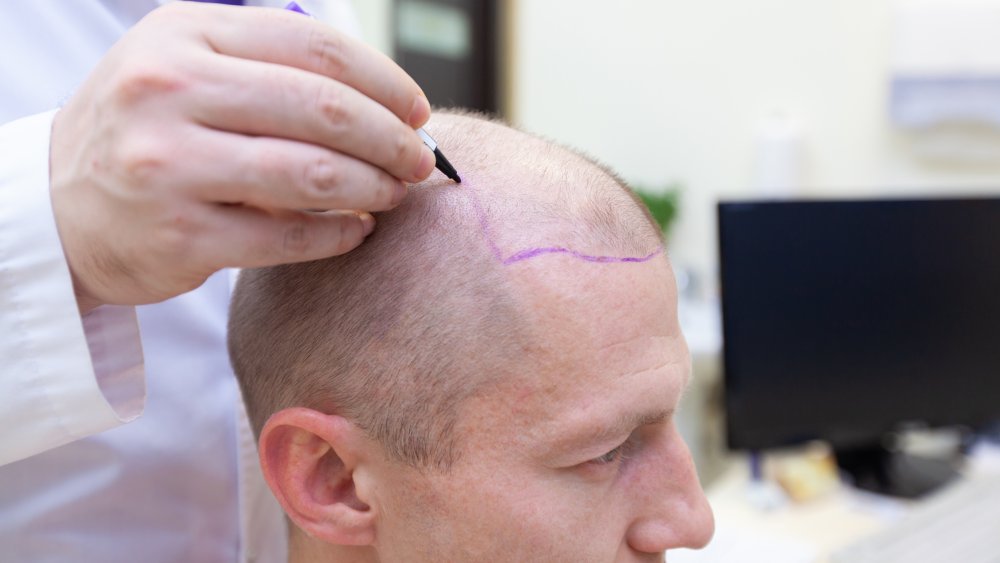Here's What You Need To Know Before Getting A Hair Transplant
For anyone that's noticed their once thick mane is feeling a bit thinner, or if your shower drain appears to be clogging on the daily with your hair after a rinse, then we feel you. Thinning hair or baldness is stressful and is a subject that can be difficult to put a positive spin on. There are numerous ways to slow down, or cover up the evidence of hair loss. One of them is getting a hair transplant.
It may sound drastic and previously known for something only men in a midlife crisis would do. This is no longer the case. Incredibly, hair transplant surgeries are gaining popularity. In 2018, The American Society of Plastic Surgeons reported 23,658 hair transplant surgeries performed across America. An increase of 3,679 surgeries from the year before (via Byrdie). So if you are exhausted from trying other cures, or want to be proactive about hair loss at its first signs, here are a few things to know before getting a hair transplant.
The donor areas versus the recipient areas
So what exactly is a hair transplant surgery? Dr. Robin Unger, a specialist in the field of hair transplants and diplomate of the American Board of Hair Restoration Surgery explains that a hair transplant surgery is a procedure where hair is taken from a "donor area," like the back or sides of your scalp, and transplanted into the "recipient area." The recipient area or areas are the place where the hair is thinning or going bald (via Byrdie).
Before deciding if a hair transplant surgery is the way to go, one must check to see if they are a good candidate for the procedure. Unfortunately, not everyone is. Francesca Fusco, a dermatologist in New York City explains what is looked for in a potential hair transplant patient. "Does the person have enough donor hair to supply the areas that are thin or balding? What kind of hair loss does the person have?" she says. "The donor hair should also not be in the process of miniaturization, which means on its way to falling out" (per Allure). Fusco goes on to reveal that androgenetic hair loss, also known as male pattern baldness, is most often the optimal type for this procedure.
Undergoing a hair transplant procedure will not give immediate results
While cosmetic procedures may often be referred to as a snappy sounding, nip and tuck, undergoing a hair transplant is a procedure that takes a considerable amount of time. Carlos K. Wesley, a hair restoration surgeon in New York City explains, "the surgical procedure is an all-day affair, ranging from five to eight hours in length. It is performed under local anesthesia, and patients are in a comfortable twilight" (via Allure). The biggest misconception about receiving a hair transplant is that there will be immediate results. It can take many months for the transplanted hair follicles to grow.
Having this surgical procedure is much more costly than buying a bottle of hair thickening shampoo. According to Ungar, "a hair transplant can cost anywhere from $2500 to $50,000. The average in the US is approximately $10,000 to $15,000 " (via Byrdie). That is a large sum! But Fusco is reassuring, saying, "your scalp will not look like a doll's head. When performed by a credible physician, the results should not be too obvious," (via Allure).


